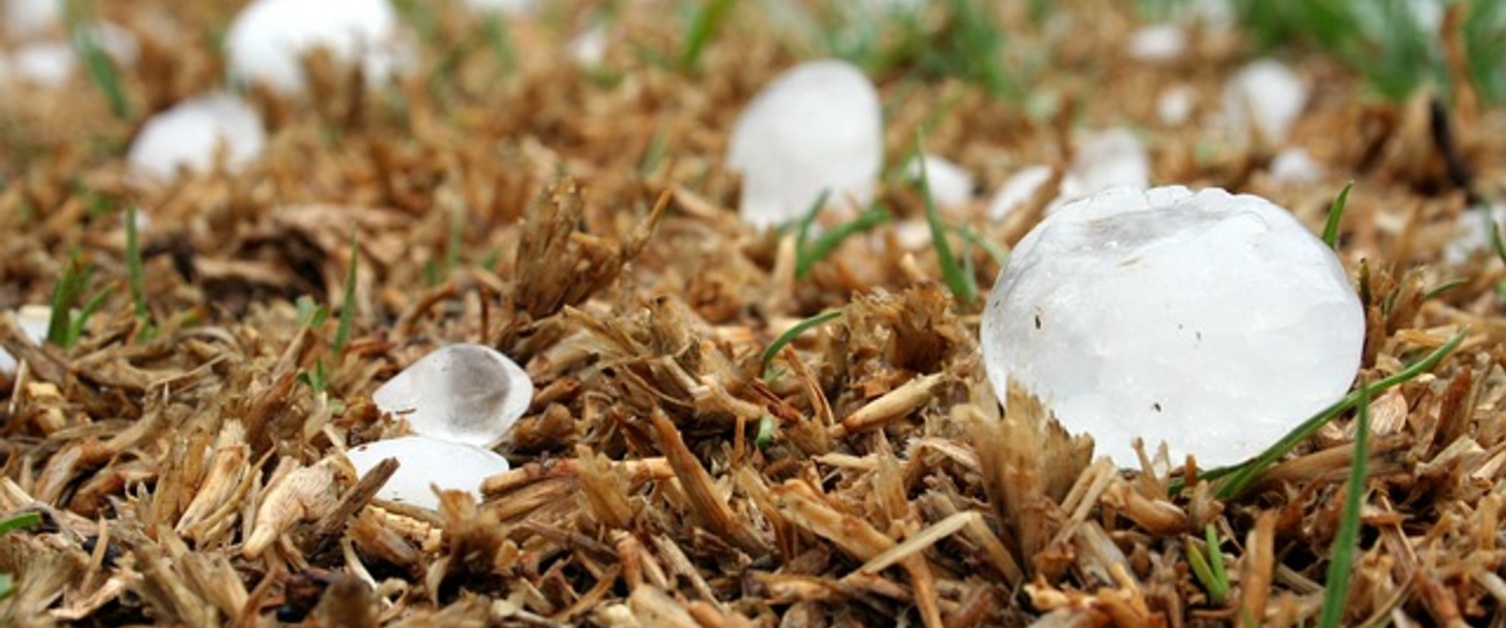Moving Hail Forecasting Forward
- By AMS Staff
- Dec 20, 2020
How do we predict the size of hail? What environmental parameters should forecasters be looking at in order to predict hail?
These are just some of the questions driving the meteorological research of Professor John Allen and his team at Central Michigan University (CMU). According to the Insurance Institute for Business and Home Safety, damage from severe storms in the continental United States costs over $10 billion per year and 70% of that cost is from hail storms. But as the CMU research team notes, current parameters for forecasting hail aren’t well examined or studied. Even the Significant Hail Parameter (SHIP) hasn’t been fully analyzed.
One of the problems with current parameters? Data!
Previous studies have looked at very small datasets in order to predict future hail sizes and storms. So even though looking for hail is already part of everyday forecasting, this research focuses on creating a good, consistent answer for a very important question: What environmental conditions drive the production of hailstones of different size over the continental United States?
Answering this question means that the team would be able to pinpoint, for example, what conditions cause 1” hail to fall versus 2” hail. The next step would be to put that into use for forecasters to make their predictions even better.
A crucial part of this project is getting the data into the best shape they can be. Cleaning and analyzing the hail data from the Storm Prediction Center’s Storm Mode dataset gave the team 95 environmental parameters to look at, but many of those were too highly similar to be useful.
In general, they noted that hail data is somewhat imprecise because hail sizes are correlated to reference objects. This means that reports of hail size can cluster around thresholds like 1,” since this is a convenient reference point for observers. As a best practice for using hail data, the team recommends researchers to “Be generous, use as big samples as possible, and avoid thresholds.”
Taking their own advice, the team categorized stones under 1.25” as “severe hail” and stones over 2.00” as “large hail.” By dividing the data into these two categories, they were able to look for environmental parameters that might accompany one size or the other. The team then performed a variety of computational and statistical analyses of the data to try and identify if there was a single parameter that would most strongly predict hail and hail of different sizes.
Spoiler alert: they could find no single parameter that predicted hail!
Their research did, however, result in a better understanding of how well the Significant Hail Parameter does at forecasting hail. Professor Allen concluded that, “As a first guess, SHIP didn’t perform badly, but statistical evidence suggests that there are better ways to approach the problem.”
And so the search for better ways to forecast hail continues. The team’s future work includes expanding their dataset with CoCoRaHs data so they have more evidence to work with. They are also looking at next steps by moving beyond the parameter approach and working on hail prediction forecasts.
Finally, the team would like to be able to better describe what the hail will be like on the ground in experiential terms. Will it be giant hail? Deep enough to be plowable? The effort to forecast hail well and consistently is ongoing so stay tuned!
If you are already collecting data as an observer, your efforts are crucially important for studies like this. Want to tell us what you’ve observed? Share with us in the community.
If you’d like to sign up for the CoCoRaHs network, you can learn more here or ask about it in the community.
This article references a talk entitled "Forecast Parameters for U.S. Hail Occurrence and Size," which was delivered at the 2020 Annual Meeting of the American Meteorological Society by Professor John T. Allen, Central Michigan Univ., Mount Pleasant, MI; and M. R. Kumjian, C. J. Nixon, R. E. D. Jewell, B. T. Smith, and R. L. Thompson. To listen to the whole talk, follow this link.
